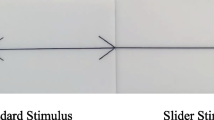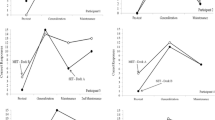Abstract
To evaluate the ability to generate mental images and its relations to artistic training, 44 undergraduates were presented with a list of selected fragments from 40 characters in the Roman alphabet. Subjects provided those letters suggested by the fragments for as many items as possible within a 90-second interval. It was hypothesized that students who had received college training in studio art would be able to produce a greater number of candidate images than students not trained in art, resulting in more correct answers and higher scores. Results confirmed the hypothesis. Trained subjects completed significantly more of the letters on the image-generation task than did those not trained in art (p=.0001). This suggests that superior ability to generate images is associated with artistic training. Further, these results imply that, to the degree to which artistic training reflects ability, image generation may also be related to artistic ability.
Similar content being viewed by others
References
Erlichman, H., & Barrett, J. (1983). Right hemisphere specialization for mental imagery: A review of the evidence.Brain Cognition, 2, 39–52.
Farah, M. (1986). The laterality of mental image generation: A test with normal subjects.Neuropsychologia, 24, 541–551.
Farah, M. (1984). The neurological basis of mental imagery: A componential analysis.Cognition, 18, 245–272.
Farah, M., Gazzaniga, M., Holtzman, J., & Kosslyn, S. (1985). A left hemisphere basis for visual mental imagery?Neuropsychologia, 23, 115–118.
Farah, M., & Weisberg, L. (1989). Brain activity underlying mental imagery: Event-related potentials during mental image generation.Journal of Cognitive Neuroscience, 1, 302–316.
Grossi, D., Modafferi, A., Pelosi, L., & Trojano, L. (1989). On the different roles of the cerebral hemispheres in mental imagery: The “o’Clock Test” in two clinical cases.Brain and Cognition, 10, 18–27.
Kosslyn, S. (1987). Seeing and imagining in the cerebral hemispheres. A computational approach.Psychological Review, 94, 148–175.
Piechowski, M., & Silverman, L. (1985). Comparison of intellectually and artistically gifted on five dimensions of mental functioning.Perceptual and Motor Skills, 60, 539–549.
Rosenberg, H. (1987–88). Visual artists and imagery.Imagination, Cognition, and Personality, 7, 77–93.
Rosenberg, H., & Epstein, Y. (1991). Alone together: Collaborative imagery in visual art-making.Journal of Mental Imagery, 15, 157–169.
Author information
Authors and Affiliations
Rights and permissions
About this article
Cite this article
Zemore, S.E. Ability to generate mental images in students of art. Current Psychology 14, 83–88 (1995). https://doi.org/10.1007/BF02686876
Accepted:
Issue Date:
DOI: https://doi.org/10.1007/BF02686876




